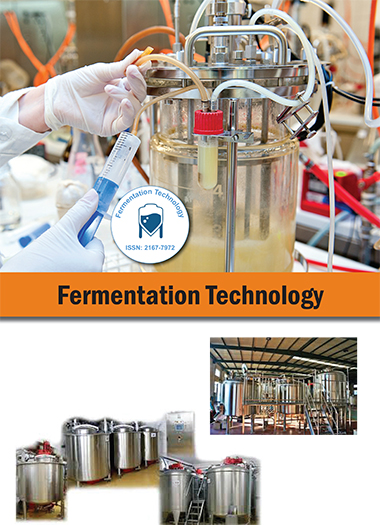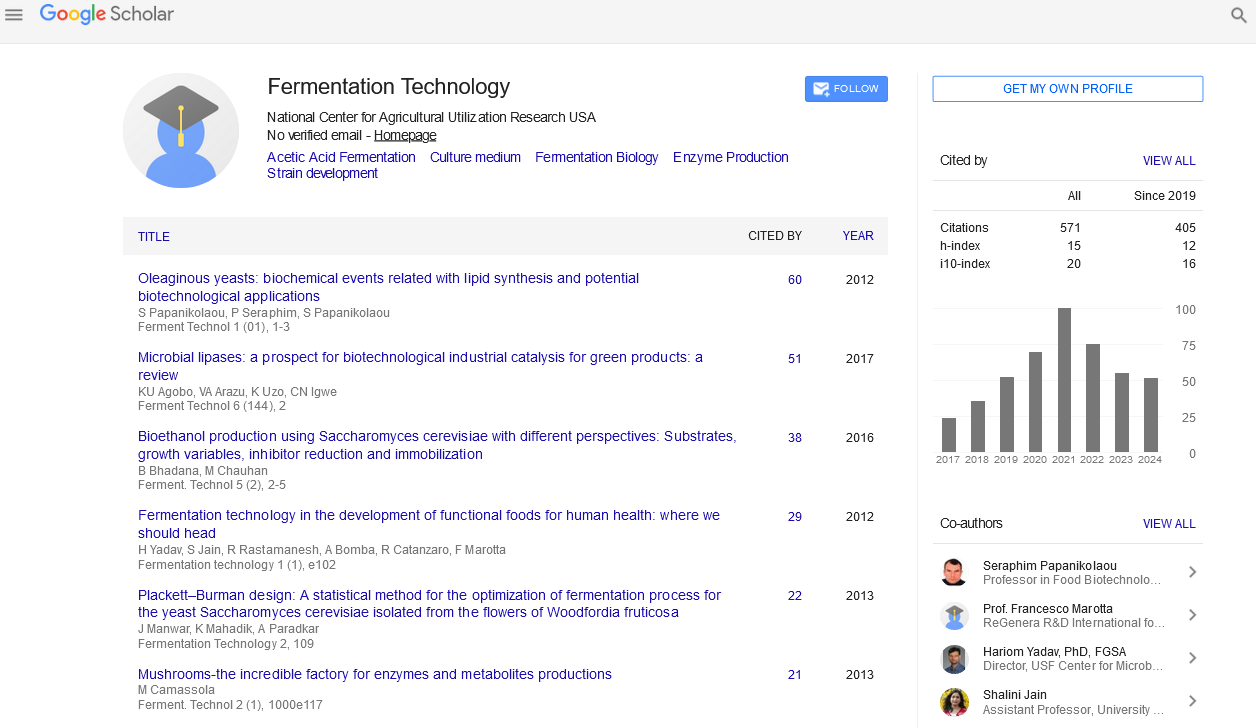Indexed In
- Open J Gate
- Genamics JournalSeek
- Access to Global Online Research in Agriculture (AGORA)
- RefSeek
- Hamdard University
- EBSCO A-Z
- OCLC- WorldCat
- Publons
Useful Links
Share This Page
Journal Flyer

Open Access Journals
- Agri and Aquaculture
- Biochemistry
- Bioinformatics & Systems Biology
- Business & Management
- Chemistry
- Clinical Sciences
- Engineering
- Food & Nutrition
- General Science
- Genetics & Molecular Biology
- Immunology & Microbiology
- Medical Sciences
- Neuroscience & Psychology
- Nursing & Health Care
- Pharmaceutical Sciences
Abstract
Extractive Fermentation of Lactic Acid with Hiochi Bacteria in a Two-Liquid Phase System
Michiaki Matsumoto, Masashi Nishimura, Hiroaki Kobayashi and Kazuo Kondo
Lactic acid production by fermentation has attracted interest because optically pure lactic acid is the raw material of biodegradable polymer, polylactic acid, which has been mainly used in food packing. In situ extractive fermentation of lactic acid with reactive extraction has two critical problems: the toxicity of diluents and extractant and the difference in the optimum pH between fermentation and reactive extraction. In this study, the extractive fermentation was conducted with alcohol-tolerant Hiochi bacteria, Lactobacillus homohiochii and Lactobacillus fructivorans, using the co-encapsulation of the bacteria and calcium carbonate to depress the decrease in pH in the capsules.
L. fructivorans NRIC0224 and 1-decanol were selected as the Hiochi bacterium and the diluent, respectively, based on the tolerance of aliphatic alcohol and extractability. We found that the presence of powdered CaCO3 in the medium considerably alleviated the toxicity of tri-n-octylamine (TOA) and that the components in the medium, yeast extract and peptone, affected the extraction of lactic acid with TOA in 1-decanol. Then, we co-immobilized both L. fructivorans NRIC0224 cells and CaCO3 into Ca-alginate capsules and constructed an in situ extractive fermentation system using TOA and the Ca-alginate capsules. This system operated successfully, and the yield and productivity were improved over those of control fermentation.

